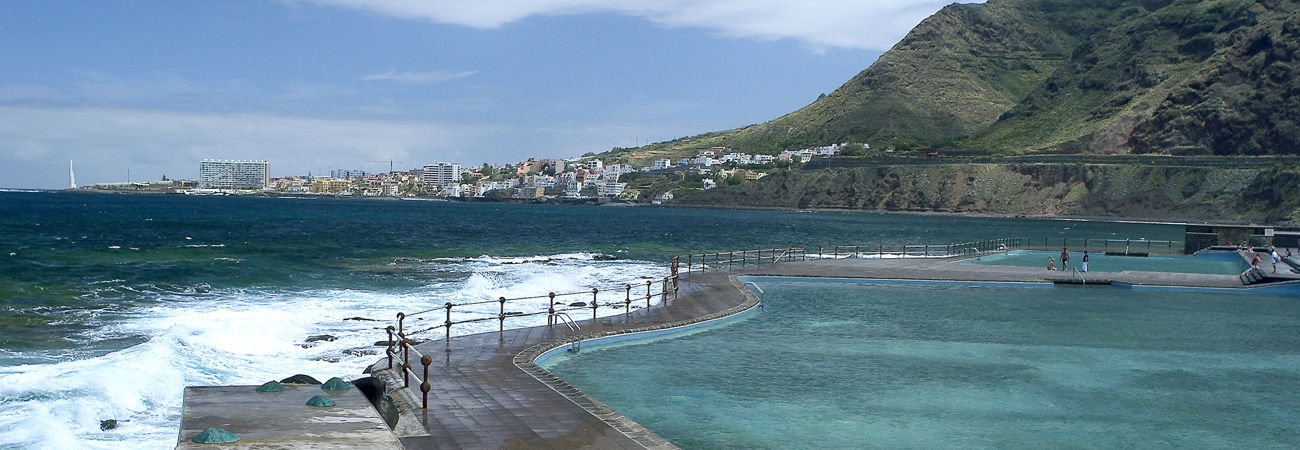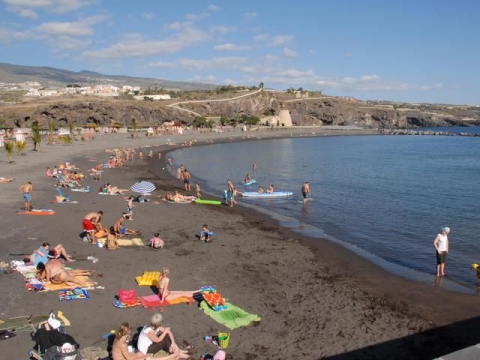Guía de Isora
Guía de Isora
Guía de Isora, located in the south-west of Tenerife, is one of the island's five largest municipalities, covering an area of 143.43 km2 and boasting more than 15 km of coastline. It is rectangular in shape, stretching from the sea up to the mountain, with its eastern border extending to the base of Pico Viejo (Teide National Park) some 2,700 metres above sea level, before it gives way to the municipality of La Orotava. To the north of Guía de Isora are the conurbations of Santiago del Teide and Adeje, while to the south there is a wide variety of natural as well as cultural features: the mountain, the lowlands, the coast, the traditional hamlets and new urban centres all combine to produce an inherent character that can be observed in every corner and in every resident of this municipality.
The climate of Guía de Isora is particularly special, as it is sheltered from the trade winds and therefore enjoys beautiful clear skies throughout most of the year, as well as low levels of rainfall and mild, stable temperatures. However, altitude remains the key variable that determines the differences in temperature and humidity levels within the municipality.
The coastal areas (Playa de San Juan, Alcalá and Varadero) are less than 200 metres above sea level and enjoy a dry climate, where there is little rainfall and high temperatures (the annual average is 24°C). In the lowlands (Guía de Isora, Chío, Tejina de Guía, Aripe, Chirche), situated between 600 and 800 metres above sea level, the weather conditions vary and temperatures fall to an average of 18°C. On the mountain, at around 1,000 metres above sea level, the climate changes from warm to cool, with an annual average of around 10°C.
Accommodation
Guía de Isora offers a varied range of high-quality accommodation. Tourists can choose between newly built luxury hotels or country houses that are perfectly integrated into their rural setting.
Gastronomy
Guía de Isora offers a wide range of cuisine, characterised by locally produced vegetables, meat and fish. This local provenance provides a cultural insight into the relationship between the flavourful dishes, their place of origin and the role they play in the municipality's traditional habits of consumption.
We invite you to sample our delicious, varied local dishes, where traditional cooking and creativity come together in an eclectic selection of superb restaurants.
Of particular note are two of the restaurants at the Hotel Ritz-Carlton Abama, which were awarded Michelin stars (two and one, respectively) in 2015.
Last but not least, our traditional desserts and pastries encompass a wide range of sweets, handmade dishes and traditional local products, an example of which are the famous Guía rosquetes (a type of doughnut), which have been made in the area since 1905.
Coast and beaches
Guía de Isora's coastline offers a multitude of ways to enjoy a dip in the sea.
Beach-lovers are spoilt for choice, with sandy beaches such as Playa de Abama and the fishing village of Playa San Juan, wild beaches, and small, enclosed coves of black lava sand such as that found in Alcalá. Also of note are the area's rock pools, where seawater continuously flows in and out and creates a kind of natural swimming pool.
Water-based activities
Guía de Isora boasts exceptional natural richness throughout its 15 km of coastline, in the form of an extraordinary succession of both surface landscapes (cliffs, sandy beaches or callaos, rock pools and sandbanks, among other features) and underwater ones (such as rocky slopes covered in multicoloured plant life and underwater caves that are home to countless numbers of animals).
It is a place where you can enjoy an immense variety of landscapes and sensations and practise all kinds of activities almost all year round, thanks to the excellent climatic conditions that prevail in Guía de Isora.








